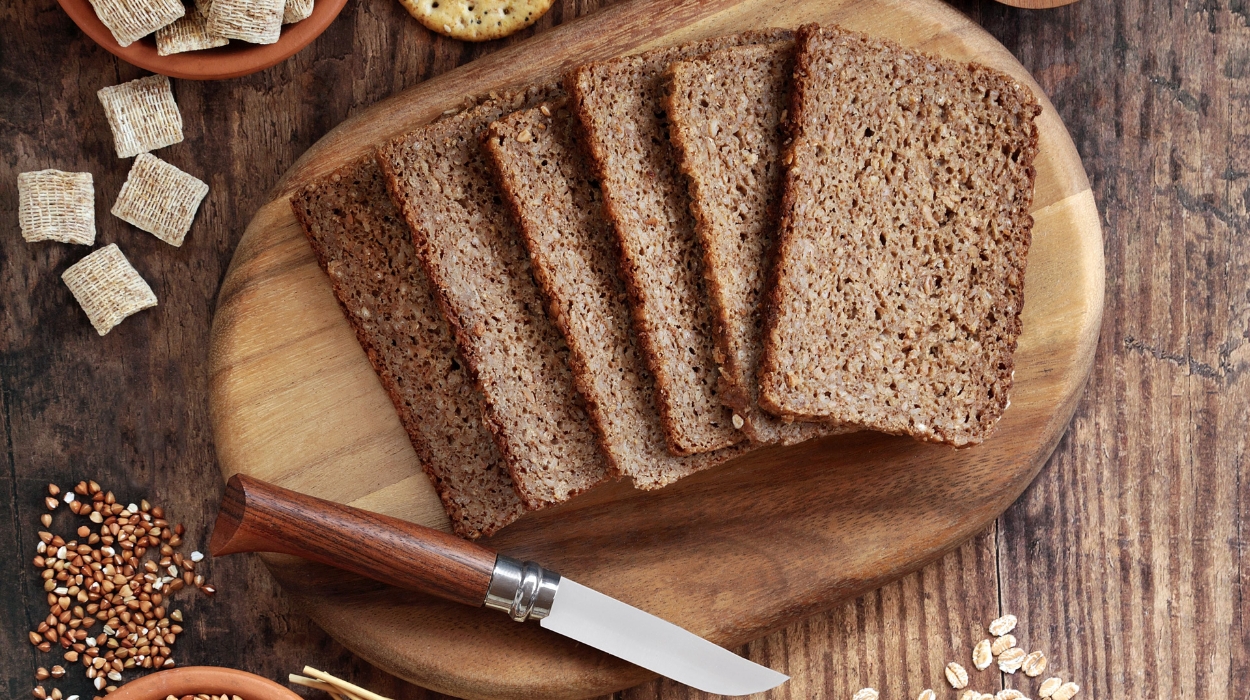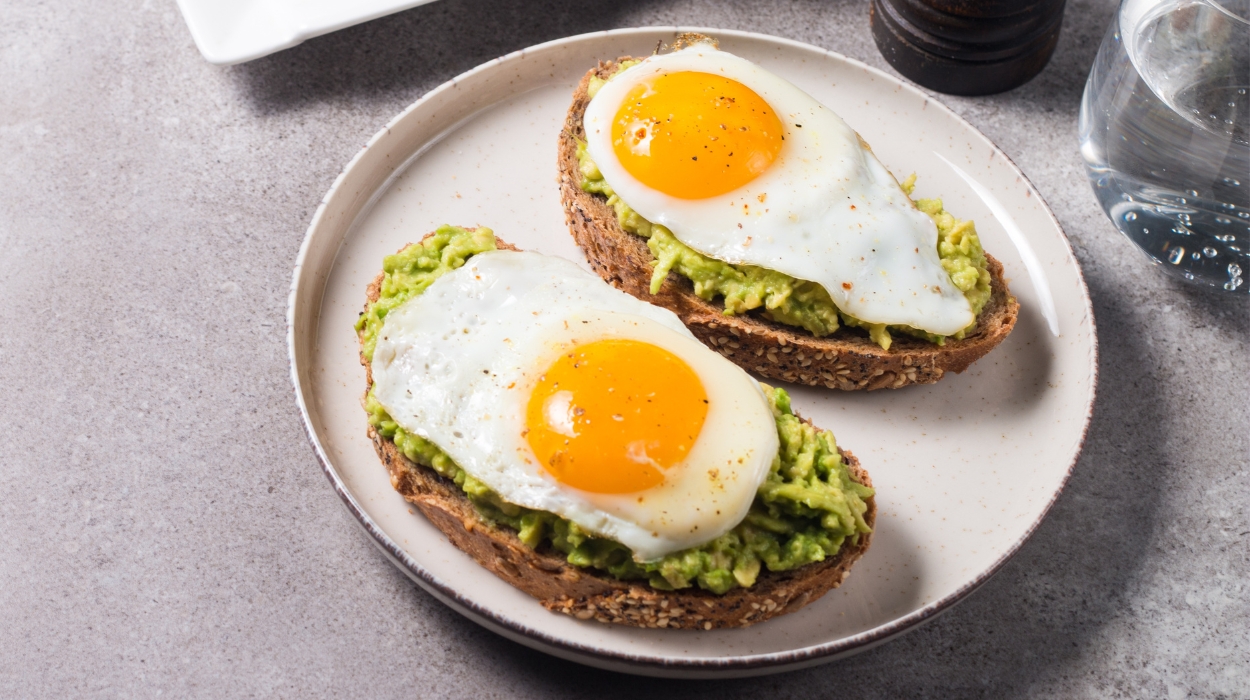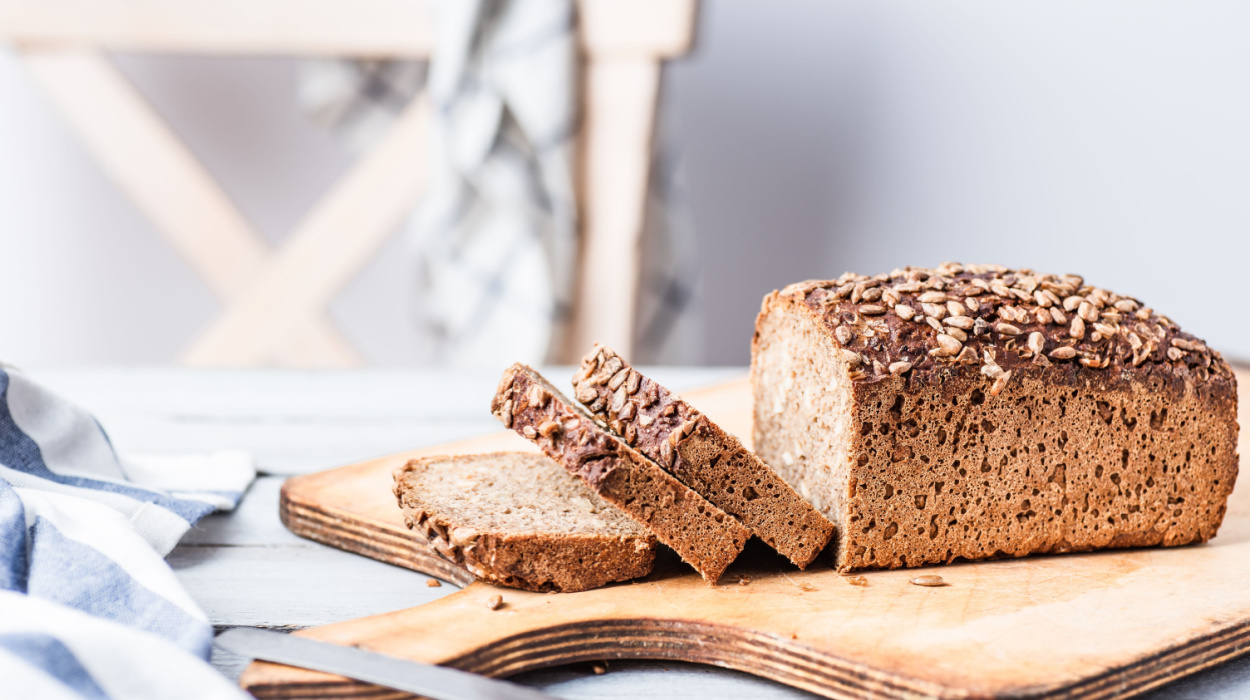While we’ve all heard the rumors that bread leads to weight gain, they’re just that — rumors.
Bread, like most foods, can be included in a healthy diet that focuses on overall balance and moderation.
However, some breads are indeed more nutritious than others. These healthy breads may help your weight loss goals by increasing your nutrients and blood sugar control.
By becoming more mindful of the foods you eat and how you eat them, you can avoid crash diets and the need for fat burners for long-term success.
Read on to learn the best bread for weight loss and what bread toppings will benefit you most.
Best Type Of Bread For Weight Loss
The best types of bread for weight loss are nutrient and fiber-rich, such as:
- Whole grain bread.
- Whole wheat sourdough bread.
- Whole grain rye bread.
- Sprouted grain bread.
- Brown rice bread.
Best Bread For Weight Loss

In general, bread made from whole grains offers the most nutrients.
Whole Grain Bread
Unlike refined grains, whole-grain breads are packed with fiber.
Increasing your fiber intake is one of the best ways to improve your gut health, which is directly tied to weight loss.[1] For example, studies show that diets with whole wheat bread instead of white are associated with lower abdominal fat.[2]
Fiber also promotes a feeling of fullness and can help regulate your appetite. The fiber from whole wheat bread helps release sugar into your bloodstream more slowly, avoiding spikes[3] and crashes. Keeping your blood sugar levels stable can also help you ward off sugar cravings.
On the other hand, can spike your blood sugar more easily. That means you might feel hungry again after your blood sugar levels come back down.
Aim for 25-35 grams[4] of fiber per day to lose weight. You’ll also want to increase the amount of water to lose weight that you drink. Hydration is essential, especially when adding fiber, since they bind together to create a smoother stool.
Whole Wheat Sourdough Bread
Sourdough’s fermentation process makes it more digestible than other types of bread. Its combination of natural bacteria and yeast provides a tangy flavor while breaking down some of the gluten.
In general, sourdough has less gluten than other types, which can be helpful for people with mild gluten sensitivity. However, sourdough should be avoided for those with more serious sensitivities or celiac disease.
Sourdough also has a lower glycemic index[5] than other breads. That means a slower rise in blood sugar to control appetite and cravings.
The probiotics created during the fermentation process can also benefit your gut microbiome,[6] which aids in weight management.
Whole Grain Rye Bread
Whole grain rye bread is also high in fiber, which can help you feel full and satisfied. Like sourdough, rye also has a lower glycemic index[7] than white bread. This may aid weight loss and benefit people with insulin resistance or type 2 diabetes.
However, those with diabetes should also be mindful of the total carbs eaten per day to lose weight.
Sprouted Grain Bread
Sprouted bread made from whole grains may be the healthiest bread for weight loss. The sprouting process increases the availability of nutrients[8] like B vitamins, fiber, vitamin C, and essential amino acids.
Sprouted grains also have some starches broken down, giving them a lower carb and higher protein content. Research shows that protein is essential[9] for weight management as it keeps you fuller and works to build and maintain muscle mass.
The more muscle mass you have, the more calories you burn at rest. This makes protein especially helpful for people wanting to lose weight.
Brown Rice Bread
Made from whole-grain brown rice, this may be the best bread for weight loss for people on a gluten-free diet. It’s nutrient-dense and benefits overall health, including improved digestion.
Like brown rice, this healthy bread is a great source of dietary fiber.[10] Since it uses whole rice grains, it may also have a lower glycemic index than bread made from refined grains. It’s rich in manganese, selenium, and magnesium. These nutrients benefit your immune system and metabolic processes, keeping your body working smoothly.
As for which one bread in particular is best for weight loss, there’s no clear answer. It depends on your energy needs[11] and taste preferences. However, all of the breads on this list are good choices.
Eating Tips

Eating bread for enjoyment and weight loss doesn’t have to be hard. Here are some tips so you can make the best choices:
- Portion control: As with any food, portioning out a healthy serving size will best help you reach your weight loss goals. Opt for one or two slices with your meal, and be mindful of thick-cut slices.
- Add healthy fat and protein toppings: Bread on its own doesn’t offer much besides carbohydrates for energy. Adding protein and healthy fats will help you feel more satisfied and full. Think eggs, tofu, smoked salmon, chicken, avocado, or nut butter as satisfying toppings.
- Incorporate fruit and veggies: What about adding fresh berries instead of jam to your peanut butter toast? If fresh berries aren’t feasible, frozen berries can be defrosted quickly and mashed to become a tasty jam. Or what about topping your deli meat sandwich with plenty of tomatoes, cucumber, and alfalfa sprouts? You can also keep a jar of roasted veggies like peppers or eggplant around for sandwiches for added fiber.
- Read labels carefully: Check the nutrition facts for the whole grain, fiber, preservative, and added sugar content. The fewer ingredients and sugar there are, the better.
- Eat mindfully: Mindful eating might sound overwhelming or boring, but it’s mostly just slowing down while you eat. When you give yourself uninterrupted time to enjoy your food, you will notice flavors more easily and eat for both nourishment and satisfaction. You’ll also better sense the physical cues that you’re full, meaning you might eat less, too.
Conclusion
So, what bread is best for weight loss?
Your best option is bread made from whole grains, including sprouted grain, rye, and sourdough varieties. These are fiber and nutrient-rich, which helps you feel full, energized, and satisfied.
In general, eating fibrous foods helps manage your portion sizes and blood sugar control, reducing overeating and cravings.
Be mindful of the toppings you add to bread, and aim for protein, vegetables, fruits, and healthy fats to create well-rounded meals or snacks. Also, keep in mind that you’ll still need a calorie deficit to lose weight.
Ultimately, bread can be part of a weight loss diet. It’s all about choosing fiber-rich varieties you enjoy, watching portion sizes and toppings, and eating mindfully.
Frequently Asked Questions
The best weight-loss bread is nutritious, delicious, and fiber-rich. This includes whole grain, sourdough, sprouted, whole rye, and brown rice bread.
Yes, a balanced diet includes all your favorite foods in moderation. Choose healthy breads rich in fiber, and be mindful of your portion sizes and toppings.
rown bread, which refers to whole grain bread, is better for weight loss than white bread. It has more fiber and nutrients, which can help regulate your appetite better.
Whole-grain flour is the best choice for bread when focusing on weight loss. It has a lower glycemic index than white flour and is higher in satiating fiber.
 Evidence Based
Evidence Based
